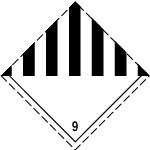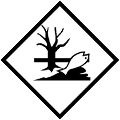SAFETY DATA SHEET
Kodak Dektol Developer; Powder
1. IDENTIFICATION
Product Identifiers
Product Name:
Kodak Dektol Developer; Powder
Other Names:
Not available
Product Number(s):
74220, EMS74220
CAS Number:
Not available
Recommended use of the chemical and restriction on use
Laboratory chemicals.
Company Details
ProSciTech Pty Ltd
11 Carlton Street
KIRWAN QLD 4817
Australia(07) 4773 9444www.proscitech.com
11 Carlton Street
KIRWAN QLD 4817
Australia(07) 4773 9444www.proscitech.com
Emergency Contact Details
ProSciTech Pty Ltd
11 Carlton Street
KIRWAN QLD 4817
Australia(07) 4773 9444www.proscitech.com
11 Carlton Street
KIRWAN QLD 4817
Australia(07) 4773 9444www.proscitech.com
2. HAZARDS IDENTIFICATION
Classification of the substance or mixture
GHS08 Health Hazard
Muta. 2 H341 Suspected of causing genetic defects.
Carc. 2 H351 Suspected of causing cancer.
GHS05 Corrosion
Eye Dam. 1 H318 Causes serious eye damage.
GHS07
Acute Tox. 4 H302 Harmful if swallowed.
Acute Tox. 4 H332 Harmful if inhaled.
Skin Irrit. 2 H315 Causes skin irritation.
Sin Sens. 1 H317 may cause an allergic skin reaction.
Muta. 2 H341 Suspected of causing genetic defects.
Carc. 2 H351 Suspected of causing cancer.
GHS05 Corrosion
Eye Dam. 1 H318 Causes serious eye damage.
GHS07
Acute Tox. 4 H302 Harmful if swallowed.
Acute Tox. 4 H332 Harmful if inhaled.
Skin Irrit. 2 H315 Causes skin irritation.
Sin Sens. 1 H317 may cause an allergic skin reaction.
Label Elements



Signal Words
Danger
Hazard Statement(s)
Hazard-determining components of labelling:
Sodium carbonate monohydrate
hydroquinone
SODIUM SULFITE
potassium bromide
metol
Harmful if swallowed.
Harmful if inhaled.
Causes skin irritation.
Causes serious eye damage.
May cause an allergic skin reaction.
Suspected of causing genetic defects.
Suspected of causing cancer.
Sodium carbonate monohydrate
hydroquinone
SODIUM SULFITE
potassium bromide
metol
Harmful if swallowed.
Harmful if inhaled.
Causes skin irritation.
Causes serious eye damage.
May cause an allergic skin reaction.
Suspected of causing genetic defects.
Suspected of causing cancer.
Precautionary Statement(s)
Obtain special instruction before use.
Do not handle until all safety precautions have been read and understood.
Avoid breathing dust/fume/gas/mist/vapours/spray.
Wash thoroughly after handling.
Do not eat, drink or smoke when using this product.
Use only outdoors or in a well-ventilated area.
Contaminated cork clothing should not be allowed out of the workplace.
Wear protective gloves/protective clothing/eye protection/face protection.
Do not handle until all safety precautions have been read and understood.
Avoid breathing dust/fume/gas/mist/vapours/spray.
Wash thoroughly after handling.
Do not eat, drink or smoke when using this product.
Use only outdoors or in a well-ventilated area.
Contaminated cork clothing should not be allowed out of the workplace.
Wear protective gloves/protective clothing/eye protection/face protection.
Primary route(s) of entry
Not available.
Human Health
Inhalation:
Remove victim to fresh air and keep at rest in a position comfortable for breathing.
Ingestion:
Call a POISON CENTER/doctor if you feel unwell. Rinse mouth.
Eyes:
Rinse cautiously with water for several minutes. Remove contact lenses, if present and easy to do. Continue rinsing.
Skin:
Wash with plenty of water. Take off contaminated clothing and wash it before reuse. If skin irritation or rash occurs: Get medical advice/attention.
Environment
Store locked up.
Dispose of contents/container in accordance with local/regional/national/international regulations.
Dispose of contents/container in accordance with local/regional/national/international regulations.
3. COMPOSITION/INFORMATION ON INGREDIENTS
Name
CAS No.
Content (w/w)
Classification
Sodium carbonate monohydrate
5968-11-6
>50-≤100%
Not Available
SODIUM SULFITE
7757-83-7
>25-≤50%
Not Available
hydroquinone
123-31-9
>2.5-≤10%
Not Available
Metol
55-55-0
≤2.5%
Not Available
potassium bromide
7758-02-3
≤2.5%
Not Available
4. FIRST AID MEASURES
Ingestion
Call for a doctor immediately.
Inhalation
Supply fresh air and to be sure call for a doctor.
In case of unconsciousness place patient stably in side position for transportation.
In case of unconsciousness place patient stably in side position for transportation.
Skin Contact
Immediately wash with water and soap and rinse thoroughly.
Eye Contact
Rinse opened eye for several minutes under running water. Then consult a doctor.
Other Information
Symptoms of poisoning may even occur after several hours; therefore medical observation for at least 48 hours after the accident.
5. FIREFIGHTING MEASURES
Suitable extinguishing equipment
Use fire extinguishing methods suitable to surrounding conditions.
HAZCHEM
No further relevant information available.
Special protective equipment and precautions for fire fighters
6. ACCIDENTAL RELEASE MEASURES
Personal precautions, protective equipment and emergency procedures
Not required.
Environmental precautions
Inform respective authorities in case of seepage into water course or sewage system.
Do not allow to enter sewers/surface or ground water.
Do not allow to enter sewers/surface or ground water.
Methods and materials for containment and clean up
Dispose contaminated material as waste according to item 13.
Ensure adequate ventilation.
Ensure adequate ventilation.
7. HANDLING AND STORAGE
Precautions for safe handling
Thorough dedusting.
Ensure good ventilation/exhaustion at the workplace.
Ensure good ventilation/exhaustion at the workplace.
Conditions for safe storage
8. EXPOSURE CONTROLS/PERSONAL PROTECTION
Exposure Standards
Material
TWA ppm
TWA mg/m3
STEL ppm
STEL mg/m3
hydroquinone
2mg/m³
-
Engineering controls
Keep away from foodstuffs, beverages and feed.
Immediately remove all soiled and contaminated clothing.
Wash hands before breaks and at the end of work.
Avoid contact with the skin.
Avoid contact with the eyes and skin.
Immediately remove all soiled and contaminated clothing.
Wash hands before breaks and at the end of work.
Avoid contact with the skin.
Avoid contact with the eyes and skin.
Personal protective equipment
Eye and face protection
Tightly sealed goggles.
Skin protection
Protective gloves. The glove material has to be impermeable and resistant to the product/the substance/the preparation. Selection of the glove material on consideration of the penetration times, rates of diffusion and the degradation. The exact break through time has to be found out by the manufacturer of the protective gloves and has to be observed.
Body protection
Protective clothing.
Respiratory protection
In case of brief exposure or low pollution use respiratory filter device. In case of intensive or longer exposure use self-contained respiratory protective device.
9. PHYSICAL AND CHEMICAL PROPERTIES
General information
Appearance
White powder
Odour
Odourless
pH
Not applicable
Vapour Pressure
Not applicable
Density
1.92748 g/cm³
Boiling Point
Undetermined
Melting Point
Undetermined
Solubility
Insoluble
Specific Gravity of Density
Not available
Flash Point
Not applicable
Flammable (Explosive) Limits
Not determined
Ignition Temperature
515°C
Formula
Not available.
10. STABILITY AND REACTIVITY
Reactivity
No further relevant information available.
Chemical stability
No decomposition if used according to specifications.
Possibility of hazardous reactions
No dangerous reactions known.
Conditions to avoid
No further relevant information available.
Incompatible materials
No further relevant information available.
11. TOXICOLOGICAL INFORMATION
Acute effects
7757-83-7 SODIUM SULFITE
Oral LD50 820mg/kg (mouse)
123-31-9 hydroquinone
Oral LD50 320mg/kg (rat)
Oral LD50 820mg/kg (mouse)
123-31-9 hydroquinone
Oral LD50 320mg/kg (rat)
Eye contact
Strong irritant with the danger of severe eye injury.
Skin contact
Irritant to skin and mucous membranes. Sensitisation possible through skin contact.
Ingestion
No further relevant information available.
Inhalation
Not further relevant information available.
Toxicity and irritation
Harmful
Irritant
Irritant
12. ECOLOGICAL INFORMATION
Ecotoxicity
Very toxic for fish
Harmful for fish
Harmful for fish
Persistence and degradability
No further relevant information available.
Bioaccumulative potential
No further relevant information available.
Other adverse effects
Water hazard class 3: extremely hazardous for water.
Do not allow product to reach ground water, water course or sewage system, even in small quantities.
Danger to drinking water if even extremely small quantities leak into the ground.
Also poisonous for fish and plankton in water bodies.
Very toxic for aquatic organisms.
Harmful to aquatic organisms.
Do not allow product to reach ground water, water course or sewage system, even in small quantities.
Danger to drinking water if even extremely small quantities leak into the ground.
Also poisonous for fish and plankton in water bodies.
Very toxic for aquatic organisms.
Harmful to aquatic organisms.
13. DISPOSAL CONSIDERATIONS
General information
Must not be disposed together with household garbage. Do not allow product to reach sewage system.
Disposal must be made according to official regulations.
Disposal must be made according to official regulations.
14. TRANSPORT INFORMATION
ADG label required


HAZCHEM
No further relevant information available.
UN Number
UN3077
Proper shipping name
ADG
3077 ENVIRONMENTALLY HAZARDOUS SUBSTANCE, SOLID, N.O.S. (hydroquinone)
IMDG
ENVIRONMENTALLY HAZARDOUS SUBTANCE, SOLID, N.O.S. (hydroquinone, Metol), MARINE POLLUTANT
IATA
ENVIRONMENTALLY HAZARDOUS SUBSTANCE, SOLID, N.O.S. (hydroquinone)
3077 ENVIRONMENTALLY HAZARDOUS SUBSTANCE, SOLID, N.O.S. (hydroquinone)
IMDG
ENVIRONMENTALLY HAZARDOUS SUBTANCE, SOLID, N.O.S. (hydroquinone, Metol), MARINE POLLUTANT
IATA
ENVIRONMENTALLY HAZARDOUS SUBSTANCE, SOLID, N.O.S. (hydroquinone)
Transport hazard class
Class 9 Miscellaneous dangerous substances and articles.
Packing group
III
Environmental hazard
Product contains environmentally hazardous substances: hydroquinone.
Symbol (fish and tree)
Symbol (fish and tree)
Special precautions for users
Warning: Miscellaneous dangerous substances and articles.
Hazard identification number (Kemler code): 90
EMS Number: F-A,S-F
Stowage Category: A
Stowage Code SW23 When transported in BK3 bulk container, see 7.6.2.12 and 7.7.3.9.
Hazard identification number (Kemler code): 90
EMS Number: F-A,S-F
Stowage Category: A
Stowage Code SW23 When transported in BK3 bulk container, see 7.6.2.12 and 7.7.3.9.
Additional information
Limited quantities (LQ) 5L
Excepted quantities (EQ) Code: E1
Maximum net quantity per inner packaging: 30g
Maximum new quantity per outer packaging: 1000g
Transport Category: 3
Tunnel restriction code: E
Excepted quantities (EQ) Code: E1
Maximum net quantity per inner packaging: 30g
Maximum new quantity per outer packaging: 1000g
Transport Category: 3
Tunnel restriction code: E
15. REGULATORY INFORMATION
Poisons Schedule Number
123-31-9 hydroquinone S2, S4, S6
7758-02-3 potassium bromide S4
7758-02-3 potassium bromide S4
Other Information
A Chemical Safety Assessment has not been carried out.
16. OTHER INFORMATION
SDS preparation date
2 October 2023
Comments
This information is based on our present knowledge. However, this shall not constitute a guarantee for any specific product features and shall not establish a legally valid contractual relationship.
This Safety Data Sheet (SDS) has been prepared in compliance with the Preparation of Safety Data Sheets for Hazardous Chemicals Code of Practice February 2016. It is the user's responsibility to determine the suitability of this information for adoption of necessary safety precautions. The information published in this SDS has been compiled from the publications listed in Section 16: to the best of our ability and knowledge these publications are considered accurate. We reserve the right to revise Safety Data Sheets as new information becomes available. Copies may be made for non-profit use.